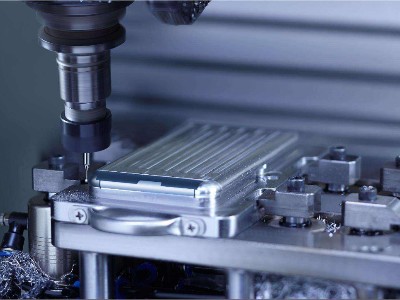
Introduction: In the realm of precision manufacturing, Computer Numerical Control (CNC) machining has emerged as a game-changer, revolutionizing the way we create intricate components and products. This blog post will delve into the world of CNC machining, exploring its history, capabilities, and the transformative impact it has had on various industries.
|
1.The Birth of CNC Machining: CNC machining traces its roots back to the late 1940s when John T. Parsons and Frank L. Stulen developed the concept of using punched cards to control machine tools. This groundbreaking invention laid the foundation for the automation and precision offered by CNC machining today.
2.How CNC Machining Works: CNC machining relies on computerized control systems to guide the movement of cutting tools and workpieces. The process involves translating a digital design into a set of instructions that dictate tool movements, cutting depths, and feed rates. This level of automation enables unparalleled precision and repeatability in manufacturing processes. |
 |
 |
3.Advantages of CNC Machining: a) Precision and Accuracy: CNC machines operate with exceptional accuracy, allowing for the creation of complex geometries and tight tolerances. This level of precision ensures consistent quality and eliminates human error. b) Efficiency and Productivity: CNC machining significantly reduces production time and increases productivity. Once programmed, CNC machines can operate continuously, eliminating the need for manual intervention between operations. c) Versatility: CNC machines can handle a wide range of materials, including metals, plastics, and composites. They can execute various operations like milling, turning, drilling, and grinding, making them incredibly versatile in meeting diverse manufacturing needs. |
| 4.Applications of CNC Machining: CNC machining has found applications in numerous industries, including: a) Aerospace and Defense: CNC machining plays a vital role in fabricating intricate components for aircraft, spacecraft, and military equipment, meeting stringent quality and performance requirements. b) Automotive: From engine components to intricate interior parts, CNC machining ensures precise manufacturing in the automotive industry, enhancing performance and safety. c) Medical: CNC machines enable the production of complex medical implants, prosthetics, and surgical instruments with exceptional precision, improving patient outcomes. d) Electronics: The electronics industry relies on CNC machining for manufacturing circuit boards, connectors, and enclosures, ensuring accurate dimensions and reliable performance. |  |
5.Future Trends and Innovations: a) Additive Manufacturing Integration: The integration of CNC machining with additive manufacturing techniques opens up new possibilities, combining the accuracy of CNC machining with the design freedom of 3D printing. b) Automation and Robotics: Advancements in robotics and automation are enabling the development of sophisticated CNC systems that can handle complex tasks autonomously, further enhancing efficiency and reducing costs. c) Internet of Things (IoT) Integration: CNC machines equipped with IoT sensors and connectivity enable real-time monitoring, predictive maintenance, and data-driven optimization, improving overall operational efficiency.
Conclusion: CNC machining has transformed the manufacturing landscape, empowering industries to produce intricate, high-quality components with unprecedented precision and efficiency. As technology continues to evolve, CNC machining is poised to play an even more significant role, driving innovation and shaping the future of precision manufacturing. With its vast capabilities and endless possibilities, CNC machining is indeed a remarkable engineering marvel that continues to shape our world.